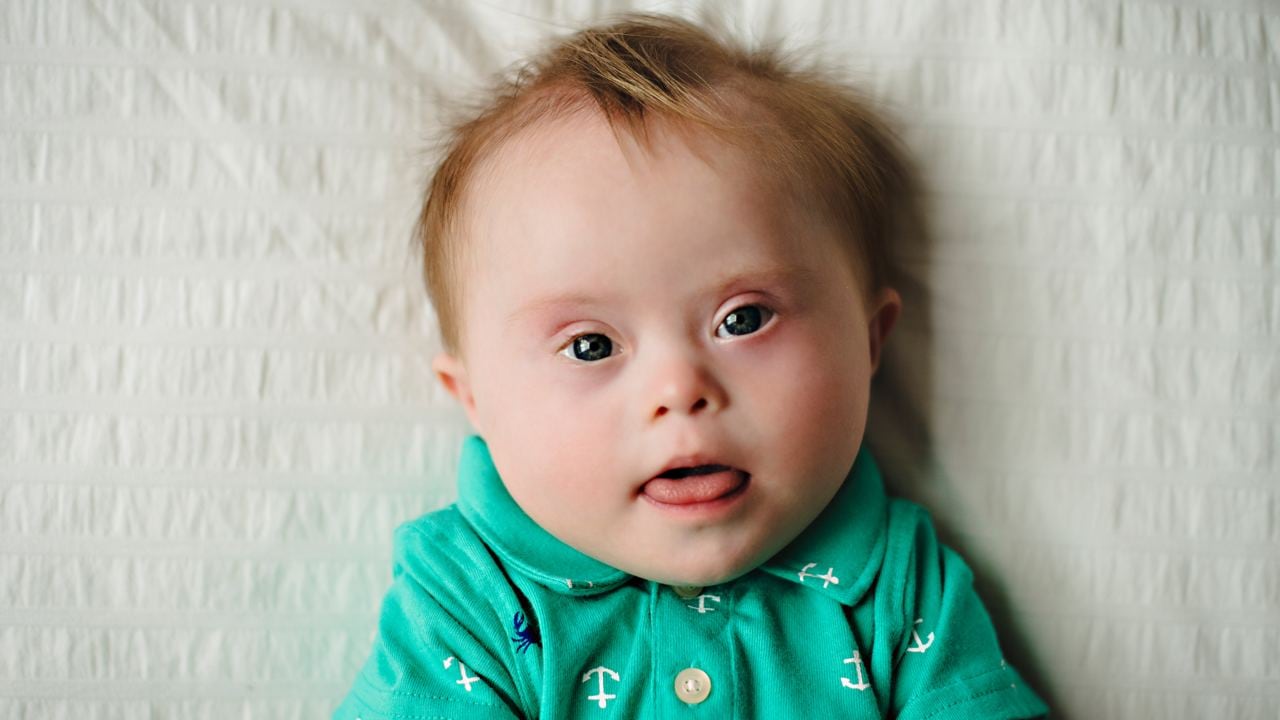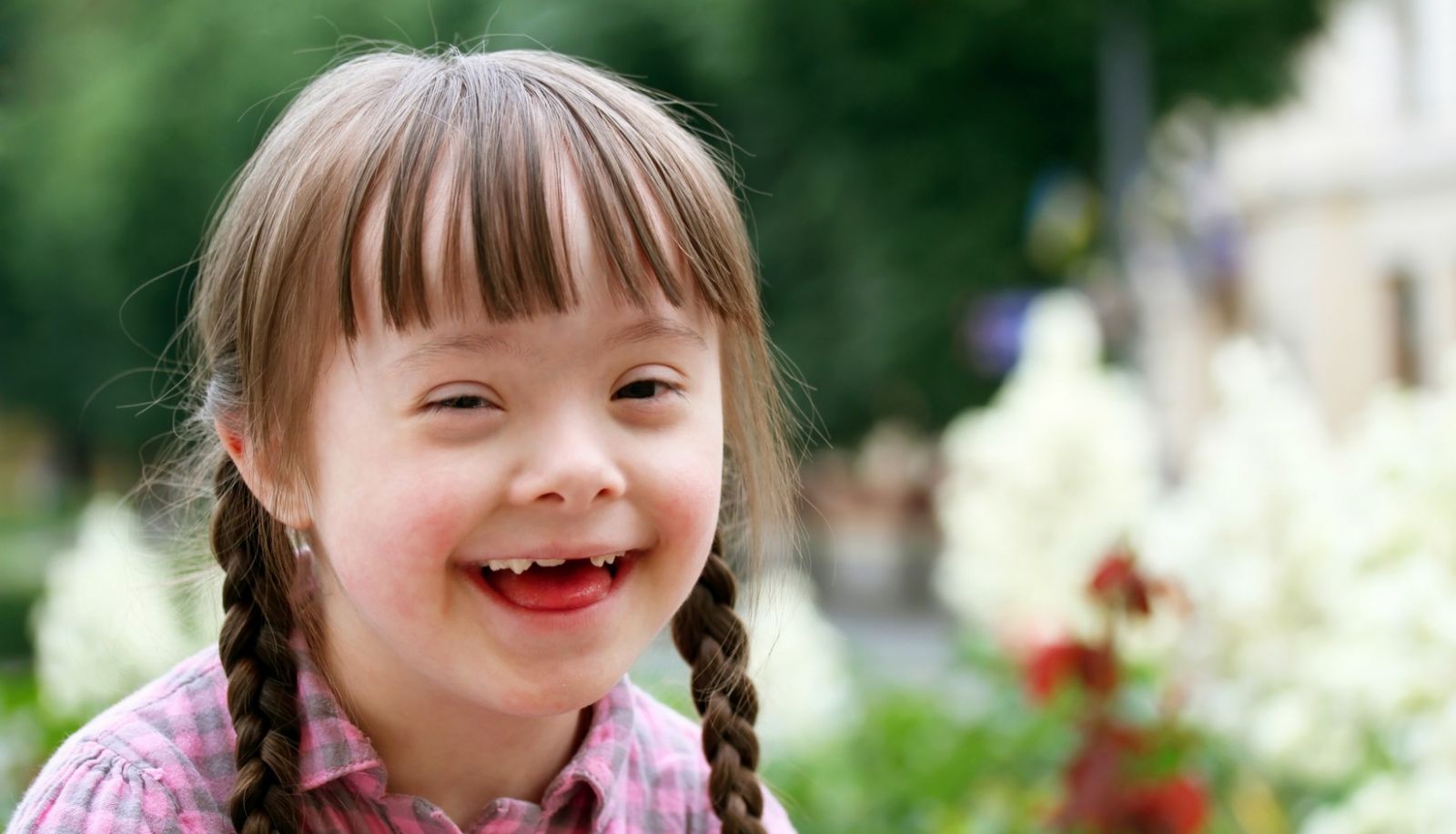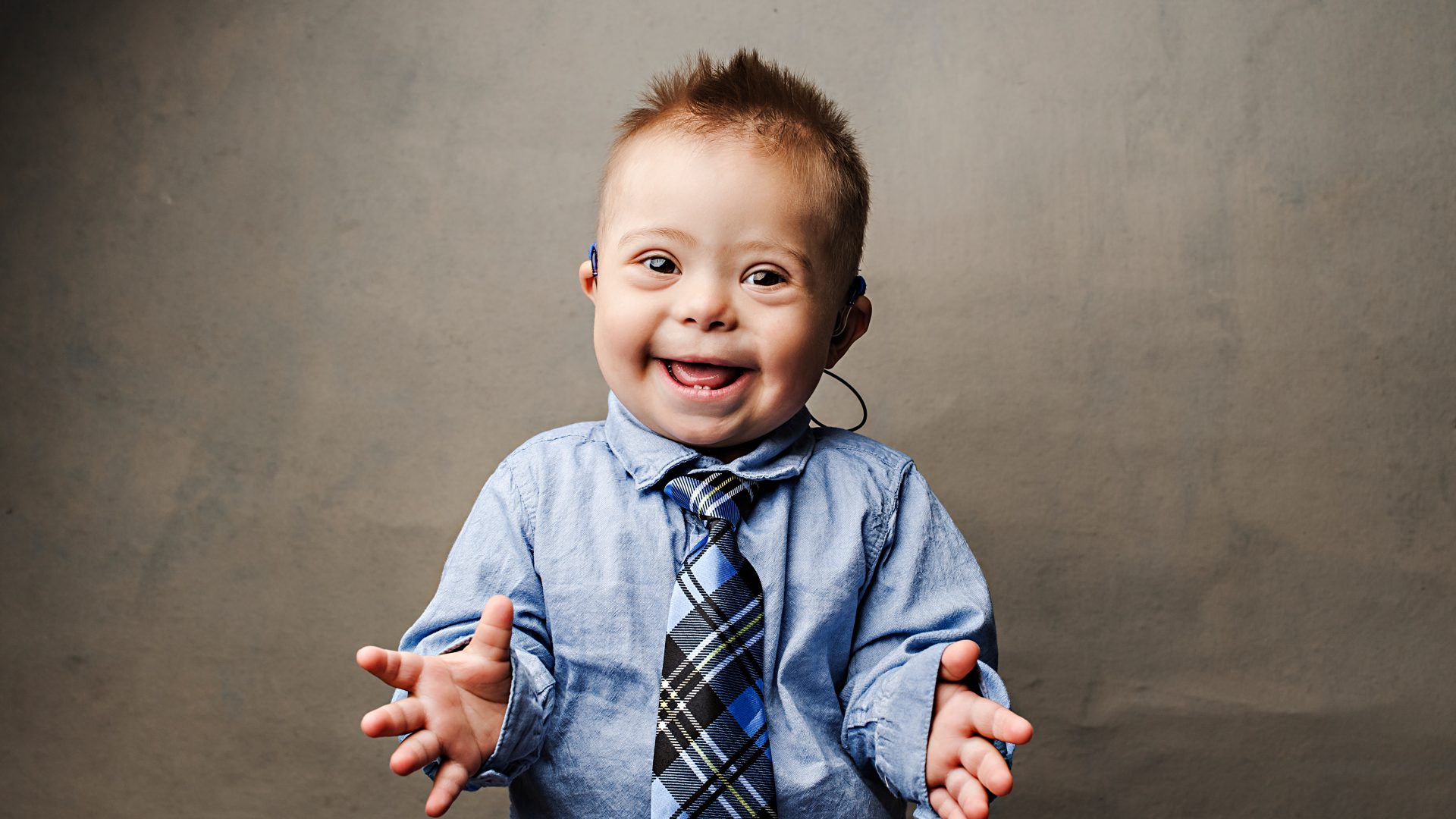Have you ever scrolled through your social media feed and stumbled upon a picture of a magnificent lion, perhaps with a slightly unusual appearance, captioned with something about a "down syndrome lion"? It’s a pretty striking image, you know, and it often sparks a lot of curiosity and sometimes, a little bit of heartfelt concern. People often wonder if animals, especially those grand creatures like lions, can experience the same kinds of genetic differences that humans do. This kind of talk really gets people thinking about how we understand conditions like Down syndrome and whether they truly show up in the animal kingdom.
The idea of a "down syndrome lion" has, in a way, captured the imagination of many across the internet. There are plenty of images and videos floating around, showing various animals, with certain looks, being described this way. It makes sense, really, that folks might connect unusual features in animals to something they recognize in people. However, getting to the bottom of this takes a little bit of looking at what Down syndrome actually means for humans and how genetics work for other living things, too.
Our conversation here aims to shed some light on this fascinating topic, moving past the viral images to share some solid information. We'll explore what Down syndrome is in people, how it's identified, and what support looks like for families. Then, we’ll turn our attention to the animal world, particularly focusing on those widely shared pictures of what some have called a "down syndrome lion," like the famous white tiger, Kenny, or the animals supposedly at the Knoxville Zoo. The truth, you see, is a bit more nuanced than a simple picture might suggest, and it helps to understand the distinct genetic makeup of different species.
- Chatgpt Plus Subscription Iran Buy
- Buy Chatgpt Plus In Iran
- Teach Me First Manga Honey
- Chatgpt Plus Payment Iran How To Pay
- Gloria Torres Of Only Fans
Table of Contents
- What is Down Syndrome in People?
- How Do Health Care Providers Diagnose Down Syndrome?
- What Conditions or Disorders are Commonly Associated with Down Syndrome?
- Getting Support and Care for Down Syndrome
- Is a "Down Syndrome Lion" a Real Thing?
- The Truth About Animals and Down Syndrome
- Why Are Some Animals Misidentified as a "Down Syndrome Lion"?
- Understanding Genetic Differences in Animals
What is Down Syndrome in People?
Down syndrome, often called Trisomy 21, is a set of physical and thinking characteristics that come about because a person has an extra copy of chromosome 21, or perhaps an extra piece of that chromosome. This genetic difference, actually, is the most frequent chromosomal reason for mild to moderate differences in how people learn and think. It’s important to remember that Down syndrome is not a sickness you catch; it’s something a person is born with due to their unique genetic makeup. The way it shows up can vary quite a bit from one person to another, you know, so each individual's experience is truly their own. Some people might have certain physical features or health considerations, while others might have different ones, and these can also change as a person gets older, which is pretty interesting.
The characteristics connected to Down syndrome are quite broad, covering both how a person looks and how they process information. For example, some common physical traits might include a flatter face, eyes that slant upwards, or a single crease across the palm of the hand. When it comes to how people think and learn, there can be a range of intellectual abilities. It’s really about a spectrum, and every person with Down syndrome has their own unique strengths and areas where they might need a bit more help. The condition, basically, describes these collections of characteristics that stem from that extra bit of genetic material on chromosome 21. It’s not a simple thing, and it’s very specific to human biology, which is a key point to keep in mind as we look at the idea of a "down syndrome lion."
How Do Health Care Providers Diagnose Down Syndrome?
Health care professionals have ways to check for Down syndrome both while a baby is still growing inside the mother and after the baby has been born. During pregnancy, there are two main kinds of tests that can be done. One type involves screening tests, which can tell a mother if she has a higher chance of carrying a baby with Down syndrome, but these tests don't give a definite "yes" or "no." They just show a possibility, you know. The other type of test during pregnancy is a diagnostic test, which can confirm whether Down syndrome is present. These diagnostic tests, such as amniocentesis or chorionic villus sampling (CVS), look directly at the baby's chromosomes to see if there's that extra copy of chromosome 21. They are pretty accurate, but they do carry a small risk, so they are usually discussed carefully with the expecting parents.
- Creation Roblox Dashboard
- Openai Chatgpt Plus Price Iran
- Openai Chatgpt Plus Iran Payment Options
- Charlize Theron Age
- Dylan Dreyers Family
After a baby is born, if there are some physical signs that suggest Down syndrome, health care providers can do a blood test to check the baby's chromosomes. This test, called a karyotype, can show the exact number and structure of the chromosomes, confirming if the extra chromosome 21 is there. This is a very precise way to get a clear answer. Once a diagnosis is made, whether before or after birth, families can then start to gather information and connect with support networks. It’s all about getting the right information at the right time, so families can prepare and understand what steps to take next. This process, actually, is quite human-specific, as it relies on understanding the human genome and its particular chromosome count.
What Conditions or Disorders are Commonly Associated with Down Syndrome?
Children who have Down syndrome, you know, do have a higher chance of experiencing some health considerations, but it's really important to remember that not every child will have serious health challenges. Some of the conditions that can be more common include heart issues, which might be present from birth, or problems with hearing and vision. There can also be differences in how the thyroid gland works, or issues with digestion. For example, some children might have a higher likelihood of certain infections, or perhaps some specific blood conditions. It's not a given that any particular person will face all or even most of these, but they are things that medical teams keep an eye on, which is good.
Because the range of potential health considerations is quite wide, care for people with Down syndrome often involves a team of different medical specialists. This means regular check-ups and screenings are a big part of their health care plan, making sure any potential issues are caught early. For instance, a child might see a heart doctor, an eye doctor, or an ear, nose, and throat specialist, depending on their individual needs. The idea is to support each person’s well-being in a way that truly fits them. This personalized approach to health, basically, helps individuals with Down syndrome live full and healthy lives, managing any conditions that come their way. This detailed medical oversight is very much a human practice, tailored to our specific biological needs.
Getting Support and Care for Down Syndrome
When it comes to supporting individuals with Down syndrome and their families, there’s a whole lot of help available. Organizations like the National Institute of Child Health and Human Development (NICHD) offer and connect people to valuable information and resources. This includes things that help parents, families, and even health care providers get a better sense of what Down syndrome means and how it can affect a person’s life. They also help people find support networks, which can be incredibly helpful for sharing experiences and getting advice from others who understand. It’s really about building a community around individuals and their families, so no one feels like they’re going through things alone.
There isn't, actually, one single, standard way to treat Down syndrome, because it's not a condition that can be "cured." Instead, the focus is on providing treatments and support that are based on each person's unique physical and intellectual needs. This also takes into account their personal strengths and what they enjoy doing. For example, some individuals might benefit from physical therapy to help with muscle development, while others might find speech therapy helpful for communication. Educational support is also a big part of it, with programs designed to help people learn and grow at their own pace. The goal, you know, is to help each person with Down syndrome reach their full potential and live a meaningful life, which is a very human-centered goal.
Is a "Down Syndrome Lion" a Real Thing?
The internet, as you might know, is pretty full of pictures and videos of animals, like lions and cats, that people have labeled as having "Down syndrome." There’s been a lot of talk about a "down syndrome lion" or even a "Knoxville Zoo lion with down syndrome." These images often show animals with certain facial features or physical characteristics that appear unusual. For instance, some pictures show a white tiger named Kenny, who had an appearance that many people, perhaps mistakenly, described as having Down syndrome. It’s easy to see why someone might look at an animal with a unique look and connect it to something they’ve seen in humans, but the scientific explanation is quite different. The idea of a "down syndrome lion" has, in some respects, become a bit of an urban legend online.
While photographs showing animals with unusual facial features are indeed real, the animal itself was never actually diagnosed with Down syndrome. Kenny the white tiger, for example, did have some very distinct facial features, but these were more likely the result of severe inbreeding rather than a chromosomal condition like Trisomy 21. Bad zoos and tourist spots, unfortunately, sometimes trick people into thinking white tigers are rare or endangered, which is far from the truth. Their unusual appearance is often the result of breeding practices that prioritize certain looks over the animals' health, leading to various physical abnormalities. So, when you see a picture of a "down syndrome lion," it’s important to remember that the animal probably has a different kind of genetic variation or health issue, not human Down syndrome.
The Truth About Animals and Down Syndrome
The straightforward answer to whether animals can develop Down syndrome, like humans do, is no. Down syndrome, as we understand it, is a genetic condition that is specific to people. It comes about because of an extra copy of chromosome 21. The thing is, different species have different numbers of chromosomes. Humans have 23 pairs of chromosomes, making a total of 46. Lions, for example, have a different number of chromosomes altogether. Because the genetic makeup is so different from one species to another, an extra chromosome 21, which causes Down syndrome in humans, simply doesn't exist in the same way in animals. So, the idea of a "down syndrome lion" is, basically, a misunderstanding of genetics across species.
While animals can’t get Down syndrome in the human sense, they can certainly have other genetic differences or mutations that might lead to physical or cognitive characteristics that appear unusual. These conditions are unique to their own species and their own genetic blueprints. For example, just like people, tigers can experience all sorts of genetic malformations. Kenny the tiger, who was often wrongly linked to Down syndrome, actually had a trisomy, which means he had an extra chromosome. However, because tigers have a different number of chromosomes than humans, his condition was not the same as human Down syndrome. It was a genetic anomaly specific to his species, which is a really important distinction to make when talking about a "down syndrome lion."
Why Are Some Animals Misidentified as a "Down Syndrome Lion"?
Many animals that have some kind of physical abnormality are often labeled by people as having "Down syndrome," but is that really the truth? We’ve seen this happen a lot with images and videos circulating online, especially those showing a "down syndrome lion" or other big cats. The reason for this misidentification often comes down to a lack of detailed information about animal genetics and perhaps a tendency to apply human medical terms to animals without fully understanding the differences. When an animal has an unusual facial structure, or maybe some developmental delays, it’s easy for a person to make a quick comparison to human conditions they are familiar with. This is how the "down syndrome animal" myth, as a matter of fact, became so widespread on the internet.
People often see an animal with distinct physical features, perhaps a flattened face or eyes that look a little different, and they instantly think of Down syndrome because those are some of the visible signs in humans. However, these features in animals are almost always the result of other genetic conditions, birth defects, or even consequences of poor breeding practices, such as inbreeding. For example, the unique appearance of Kenny the white tiger, often described as having "Down syndrome," was more accurately attributed to the severe inbreeding that created his specific genetic makeup. It's not about an extra chromosome 21 in the way humans have it. So, while the visual cues might seem similar, the underlying cause for an animal's unusual appearance is, you know, fundamentally different from human Down syndrome. This distinction is vital when discussing the supposed existence of a "down syndrome lion."
Understanding Genetic Differences in Animals
It's fascinating to learn about the various ways genetic differences can show up in animals. While they don't get Down syndrome in the same way humans do, animals can certainly have their own unique genetic conditions that affect their physical appearance, their health, and even how they behave. These conditions might be caused by mutations, or perhaps by having an unusual number of chromosomes specific to their species, or even by problems that arise during development. For instance, some genetic conditions in animals can lead to differences in coat color, or perhaps affect bone growth, or even influence how their nervous system works. It's a really broad area of study, and it helps us appreciate the complexity of life on Earth. The genetic makeup of a "down syndrome lion" is, in reality, a tale of different chromosomes and different biological pathways.
Scientists and veterinarians are always learning more about animal genetics and the specific conditions that affect different species. This knowledge helps them provide the best possible care for animals with unique needs. For example, understanding that a certain breed of dog might be prone to a particular genetic eye condition allows for early screening and interventions. Similarly, knowing that an animal like Kenny the tiger had a genetic anomaly due to inbreeding helps us understand the importance of responsible breeding practices in zoos and conservation efforts. So, while the idea of a "down syndrome lion" might be a popular internet topic, the real story lies in the diverse and complex world of animal genetics, where each species has its own distinct set of genetic possibilities and challenges.
- Hattel Alan Berta
- Chatgpt Plus Iran Payment Method
- Tatum Oneal Partner
- Charlize Theron Age
- Teach Me First Honey Comics



